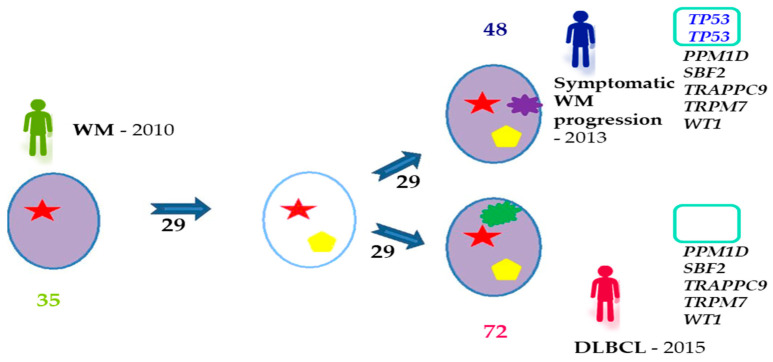Figure 2.
Branching model of tumor evolution observed in WM transformation to DLBCL, adapted from Jiménez, C., Alonso-Álvarez, S., Alcoceba, M. et al. From Waldenström’s macroglobulinemia to aggressive diffuse large B-cell lymphoma: a whole-exome analysis of abnormalities leading to transformation. Blood Cancer J. 7, e591 (2017). https://doi.org/10.1038/bcj.2017.72 [87]. The figure shows an example from a patient who was diagnosed with WM in 2010 and who transformed to DLBCL in 2015, with a symptomatic progression in 2013 before the transformation: 35 mutations were identified at diagnosis, 48 at relapse and 72 at transformation, and 29 of the alterations were conserved throughout the entire process. Mutations in PPM1D, SBF2, TRAPPC9, TRPM7, and WT1 genes were present at progression and transformation. By contrast, two TP53 mutations at relapse that were not observed at transformation. This implies that the transformed final clone did not evolve from the same subclone as was responsible for progression, but from a previous one that would not yet have acquired the TP53 mutations. DLBCL, diffuse large B-cell lymphoma; WM, Waldenström’s macroglobulinemia.

